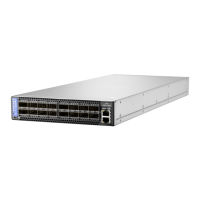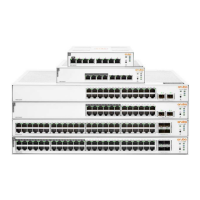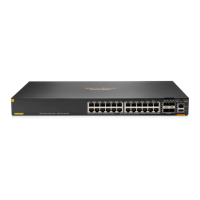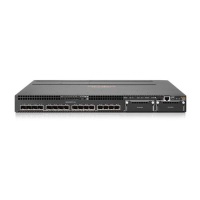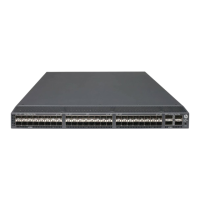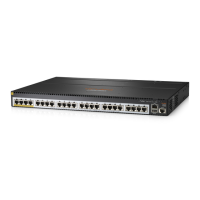• Up to 24 autosensing ports of high-performance 16-Gb/s technology in a single domain.
• POD scaling from 12 to 24 ports.
• 4, 8, and 16 Gb/s autosensing FC switch and router ports
◦ 4 and 8 Gb/s performance is enabled by 8 Gb/s SFP+ transceivers
◦ 4, 8, and 16 Gb/s performance is enabled by 16 Gb/s SFP+ transceivers
• Universal ports self-configure as E, F, or M ports. EX_Ports can be activated on a per-port basis with
the optional Integrated Routing license. D-port functionality is also available for diagnostics.
• Airflow is set for port-side exhaust.
• ISL Trunking (licensable), which allows up to eight ports (at 4, 8, or 16 Gb/s speeds) between a pair of
switches combined to form a single, logical ISL with a speed of up to 128 Gb/s (256 Gb/s full duplex)
for optimal bandwidth utilization and load balancing. The base model permits one eight-port trunk plus
one four-port trunk.
• DPS, which optimizes fabric-wide performance and load balancing by automatically routing data to the
most efficient available path in the fabric.
• Hewlett Packard Enterprise-branded SFP+ optical transceivers that support any combination of SWL,
LWL, and ELWL optical media among the switch ports.
• Support for unicast traffic type.
• Fabric OS delivers distributed intelligence throughout the network, and enables a wide range of value-
added applications such as Advanced Web Tools and Zoning. Optional Fabric Services include
Adaptive Networking with QoS, Extended Fabrics, Enhanced Group Management, Fabric Watch, ISL
Trunking, and APM.
• Support for AG configuration where server ports connected to the fabric core will be virtualized.
• Hardware zoning is accomplished at the port level of the switch and by WWN. Hardware zoning
permits or denies delivery of frames to any destination port address.
• Extensive diagnostics and system-monitoring capabilities for enhanced RAS.
• Real-time power monitoring enables users to monitor real-time power usage of the fabric at a switch
level.
• Port-to-port latency minimized to 800 ns using cut-through frame routing at 16 Gb/s.
Platform components
• A system motherboard that features a PowerPC 440EPx RISC CPU running at 667 MHz, with
integrated peripherals
• An RJ-45 10/100 Base-T Ethernet system management port that supports switch IP address discovery
and configuration
• One RS-232 serial port with an RJ-45 connector for initial switch setup and factory default restoration
(the integral LEDs remain unlit at all times)
• A USB port that provides storage for firmware updates, supportsave command output, and storage
for configuration uploads and downloads
• One power supply and fan assembly in the base model. There are two fans per assembly. An optional
second power supply and fan assembly is available for redundancy and hot-swap capability
• One LED (green/amber) per FC port to indicate status
• One LED (green) for system power
• One LED (green/amber) for system status
• Two Ethernet port LEDs (integrated with RJ45) for speed and port activity. (A green LED for port
speed and an amber LED for port activity)
• SEEPROM for switch identification
• Voltage, fan, and temperature monitors
• RTC with battery
Platform components 17

